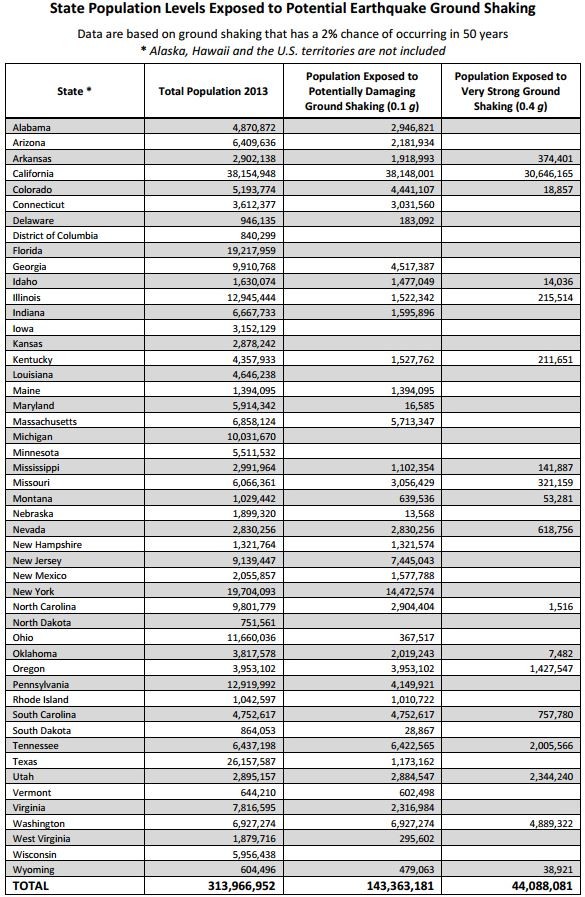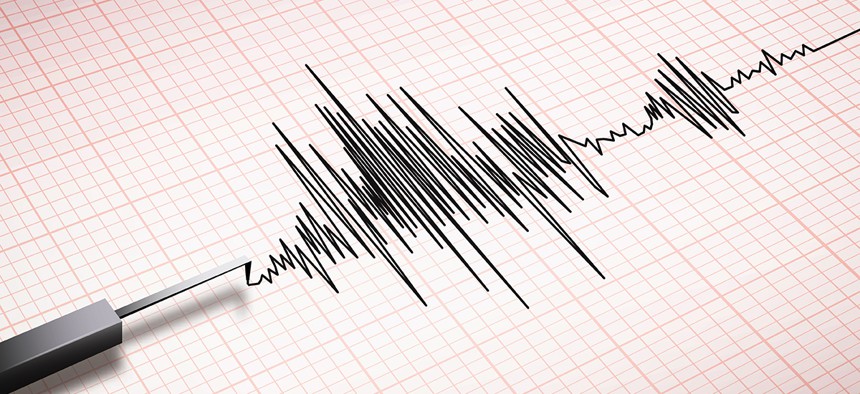More Than 143 Million Americans Are at Risk From Earthquakes
That’s almost double a 2006 U.S. Geological Survey estimate of 75 million.
In 2006, the U.S. Geological Survey issued an alarming report saying more than 75 million Americans faced a “significant risk” from earthquakes.
Among its warnings: The East Coast could be hit extra hard because of its dense populations and lack of retrofitted structures; catastrophic tsunamis might swamp Alaska and the Pacific Northwest ; and a repeat of “historic U.S. earthquakes, such as the 1906 San Francisco earthquake or the 1811-1812 New Madrid earthquakes, could cause up to $500 billion in damage.”
Well, USGS researchers have revisited these grim predictions in a new study , and this week announced they’re making some tweaks. The number of Americans under a quake threat has almost doubled— to 143 million in the lower 48. Lump in Alaska, Hawaii, and the U.S. territories, and the count equals almost half the country’s population.
Roughly 57 million live in places with a “moderate” risk of building-damaging shaking, while 28 million reside in areas with a “high” potential for destruction. The reasons for the jacked-up estimates are population growth in quake-prone regions and more advanced scientific measurements.
Take a look at the above map to see how different cities stack up for risk; red-and-orange zones indicate places with a 2 percent chance of intense shaking in the next 50 years. The agency dives deeper into the data:
The USGS shaking calculations consider the chance of an earthquake occurring in a 50-year time frame, as that is the typical lifetime of a building. This time frame is thought to be reasonable for life-safety considerations when designing buildings and other structures….
When one considers very strong ground shaking levels, the 10 states with the highest populations exposed (in descending order) are California, Washington, Utah, Tennessee, Oregon, South Carolina, Nevada, Arkansas, Missouri and Illinois. Although this level of shaking is estimated to occur relatively infrequently, it could cause significant damage and causalities. The difference between those areas at risk from moderate versus strong shaking depends on a variety of factors, including the location of fault lines and the seismicity rates of the area.
And here’s the USGS state-by-state breakdown of population risk, not including Hawaii, Alaska, or U.S. territories:









